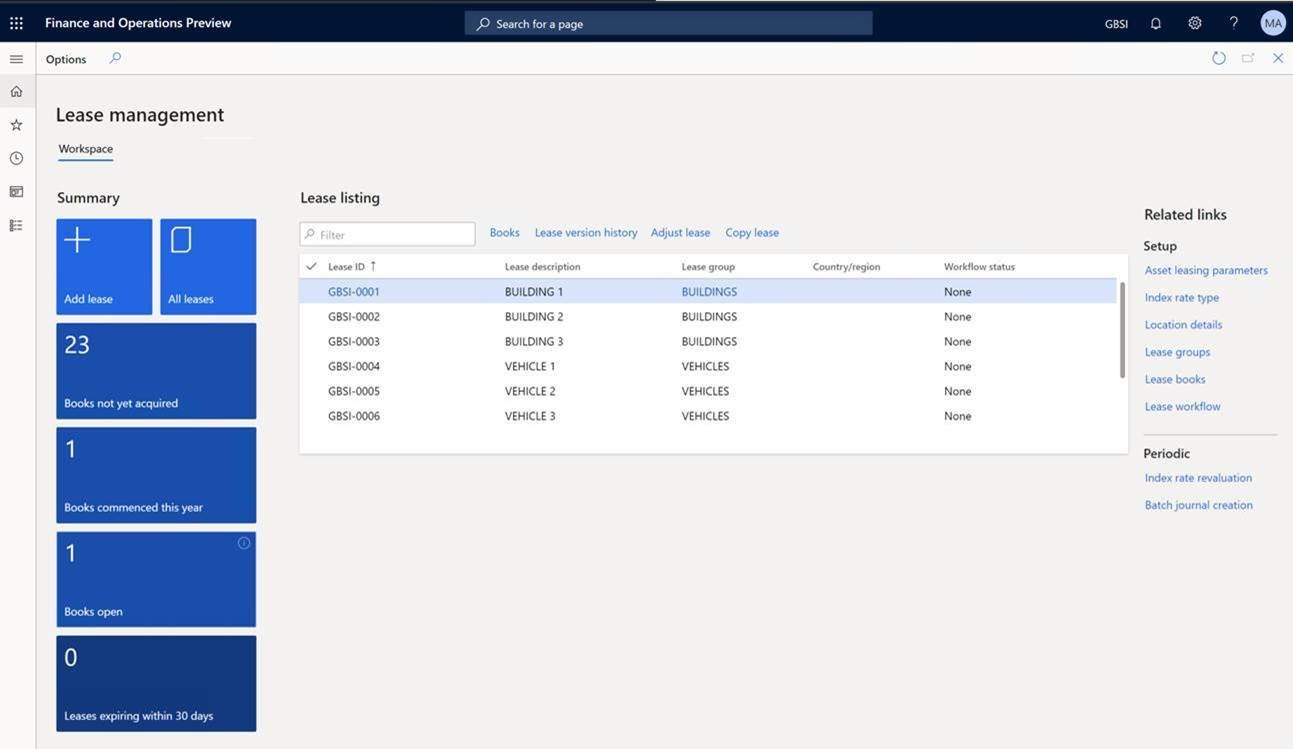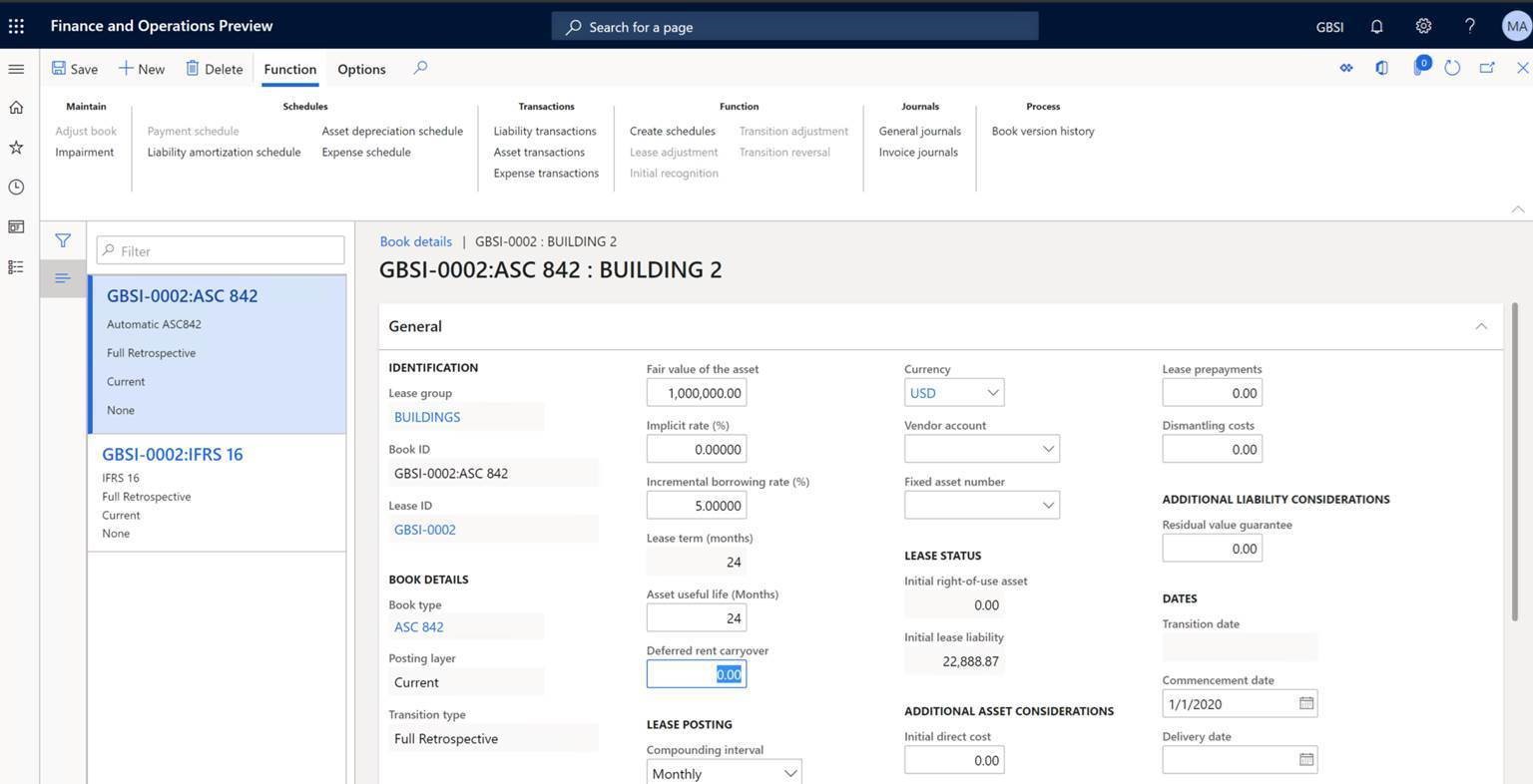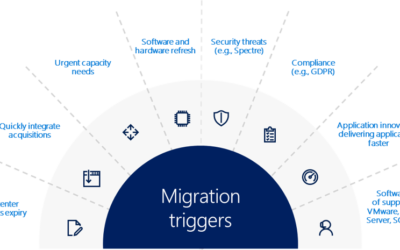Today most organizations are experiencing challenges and making plans that they did not anticipate. In times like these, organizations do not have time to worry about reacting to changes in accounting regulations, yet they cannot risk leaving them unaddressed.
A core tenant of Dynamics 365 Finance is to enable you to reduce risk, and to automate and modernize your global financial operations. To help you achieve this, Microsoft are introducing asset leasing in November 2020. Asset leasing helps you adapt and be compliant to the FASB and IFRS 16 accounting regulations related to lease management and its financial impact. Asset leasing will reduce manual errors and save your users time through automatic lease status updates, right of use assets, wholistic monitoring and analytics, and calculations of net present value, lease interest, and future cash payments.

Asset leasing features:
- Automates the complex lease calculation of present value and its subsequent processes such as future lease payment, lease liability amortization, right-of-use asset depreciation, and expense schedules.
- Automatically classifies the lease as either operating or finance, or as a short-term lease or low-value lease. The lease classification tests include transfer of ownership, purchase option, lease term, present value, and unique asset.
- Centralizes the management of lease information, such as important dates, including the commencement and expiration dates, as well as the lease’s transaction currency, payment amounts, and payment frequency.
- Helps to generate accounting entries for the initial recognition, and subsequent measurement of the lease liability and right-of-use asset.
- Reduces time for complex calculation of lease modification and automatic adjustment transactions.
- Provides posting to different layers to accommodate different reporting purposes, such as tax reports that are available in Dynamics 365 Finance.
- Complies with the accounting standards to represent leases on a balance sheet using the Balance sheet impact calculator.
- Provides audit controls over the integrity of the lease data to ensure that the posted transactions match the calculated amounts of the present value, future payments, and liability amortization.
- Provides tools to import from or export to Excel for all lease data using data management.
- Includes features that help in preparing asset leasing reports, particularly the preparation of disclosures and notes.
- Integrates with company chart of accounts, currencies, fixed assets, vendors, journals, data management, and number sequences.












